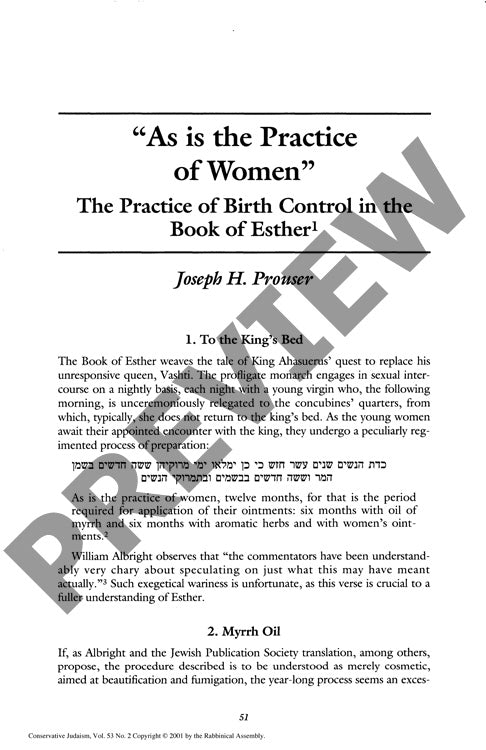As Is the Practice of Women the Practice
Couldn't load pickup availability
Ancient medical texts reveal a startling possibility about the Book of Esther: the twelve-month beauty regimen described in Esther 2:12 likely served as an elaborate contraceptive protocol rather than mere cosmetic preparation. Philological analysis uncovers how myrrh oil and aromatic herbs, central to the ritual, were widely used as contraceptives and abortifacients in antiquity. The connection deepens through Esther's Hebrew name Hadassah (myrtle), linking her to plants historically known for preventing conception. Through examination of Hebrew terminology, Greek mythological parallels (particularly the Myrrha myth), ancient medical sources including Soranus and Hippocrates, and rabbinic literature, a complex pattern emerges. The analysis reveals remarkable similarities between Esther and the Greek goddess Myrrha, both figures associated with contraceptive herbs and taboo sexual relationships. Rabbinic discussions of Esther's use of contraceptive devices (mokh) further support this interpretation. Even the festival name "Purim" may derive from concepts of frustrated fertility rather than the traditional explanation of casting lots. This fresh reading transforms the Book of Esther into an allegory of Jewish self-determination, where contraceptive practices symbolize the diaspora community's strategic protection against hostile forces through wisdom and careful planning.

More Information
-
Physical Description
-
Publication Information
Published 2001
ISBN
-
Publication Credits
Joseph Prouser

